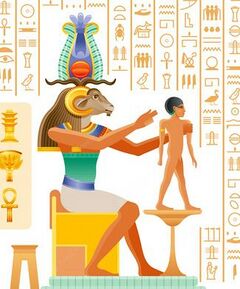- v50 information can now be added to pages in the main namespace. v0.47 information can still be found in the DF2014 namespace. See here for more details on the new versioning policy.
- Use this page to report any issues related to the migration.
DF2014:Aardvark man
|
a
| |
| Urist likes aardvark men for their long ears. | |
|---|---|
| Biome | |
|
| |
| Variations | |
| Attributes | |
| Alignment: | Savage |
| Cannot be tamed | |
| Size | |
| Birth: | 600 cm3 |
| Mid: | 30,000 cm3 |
| Max: | 60,000 cm3
|
| Age | |
| Adult at: | 1 |
| Max age: | 60-80 |
| Cannot be butchered | |
| This article is about an older version of DF. |
- A person with the head and tail of an aardvark.
Aardvark men are the savage half-man/half-beast variant of the standard aardvark. They can be found topside in tropical biomes, wandering in groups of 1-5. Because of the double 'a', they appear near the top of alphabetized lists, including the create creature list in the object testing arena. Like their aardvarkian brethren, aardvark people do not actually eat vermin.
Like other savage animal people, aardvark men may occasionally join civilizations, becoming full-fledged citizens who may appear in your fortress as visitors or be playable in adventurer mode.
Some dwarves prefer aardvark men for their long ears and snout.

|
This article or section has been rated D for Dwarf. It may include witty humour, not-so-witty humour, bad humour, in-jokes, pop culture references, and references to the Bay12 forums. Don't believe everything you read, and if you miss some of the references, don't worry. It was inevitable. |
Some Aardvark men are known to wear glasses, and form tight relationships with many other types of humanoid animals, most notably the hare man.
[CREATURE:AARDVARK_MAN]
[COPY_TAGS_FROM:AARDVARK]
[APPLY_CREATURE_VARIATION:ANIMAL_PERSON]
[GO_TO_END]
[SELECT_CASTE:MALE]
[CASTE_NAME:aardvark man:aardvark men:aardvark man]
[SELECT_CASTE:FEMALE]
[CASTE_NAME:aardvark woman:aardvark women:aardvark woman]
[SELECT_CASTE:ALL]
[APPLY_CREATURE_VARIATION:PUNCH_ATTACK]
[APPLY_CREATURE_VARIATION:KICK_ATTACK]
[APPLY_CREATURE_VARIATION:NAIL_SCRATCH_ATTACK]
[APPLY_CREATURE_VARIATION:TOOTH_BITE_ATTACK]
[APPLY_CREATURE_VARIATION:STANDARD_BIPED_GAITS:900:711:521:293:1900:2900] 30 kph
[APPLY_CREATURE_VARIATION:STANDARD_CLIMBING_GAITS:2990:2257:1525:731:4300:6100] 12 kph
[APPLY_CREATURE_VARIATION:STANDARD_SWIMMING_GAITS:2990:2257:1525:731:4300:6100] 12 kph
[APPLY_CREATURE_VARIATION:STANDARD_CRAWLING_GAITS:2990:2257:1525:731:4300:6100] 12 kph
[GO_TO_START]
[NAME:aardvark man:aardvark men:aardvark man]
[DESCRIPTION:A person with the head and tail of an aardvark.]
[POPULATION_NUMBER:5:10]
[CLUSTER_NUMBER:1:5]
[MAXAGE:60:80]
[CREATURE_TILE:'a']
[COLOR:7:0:0]
[GO_TO_TAG:USE_TISSUE_TEMPLATE:NAIL:NAIL_TEMPLATE]
[TISSUE_LAYER:BY_CATEGORY:FINGER:NAIL:FRONT] |
